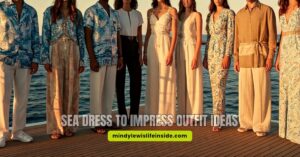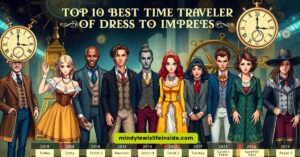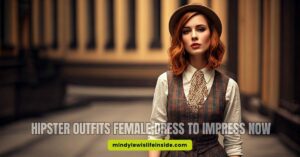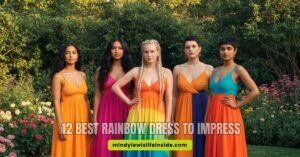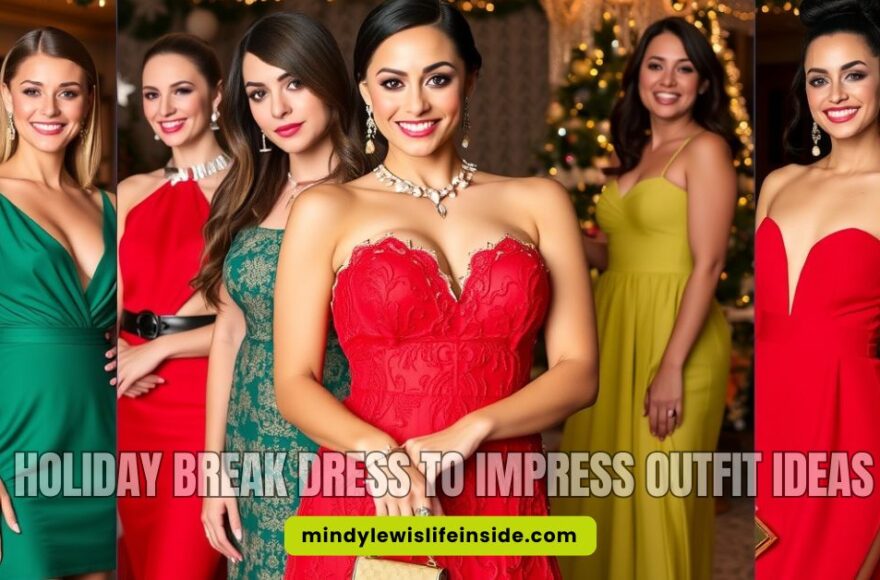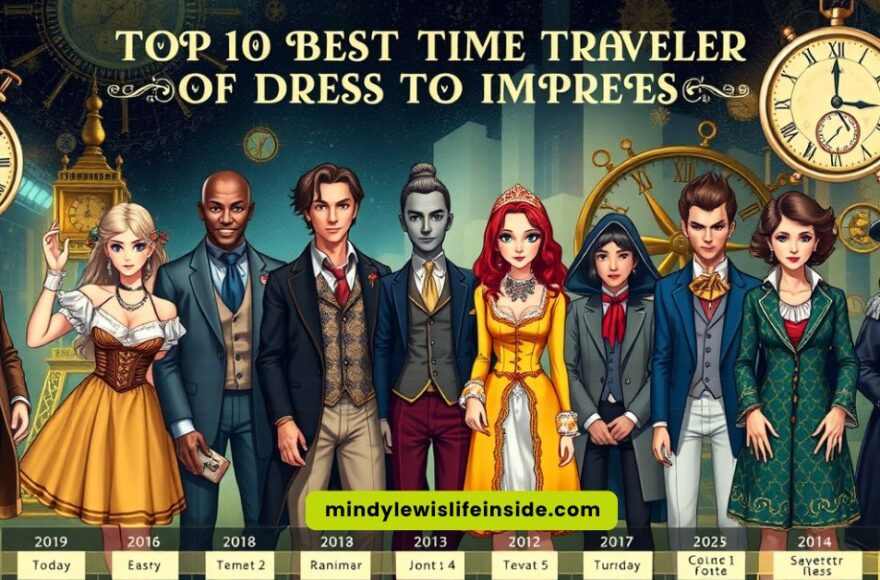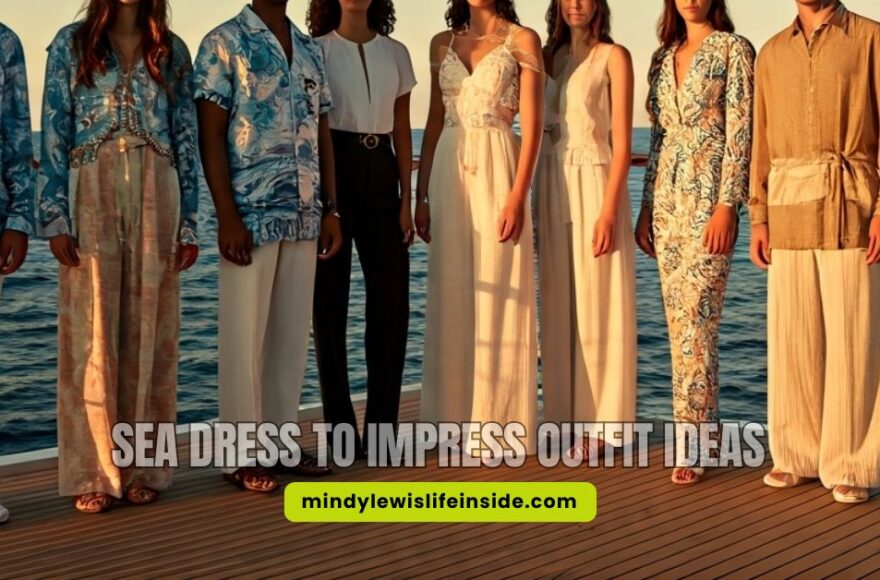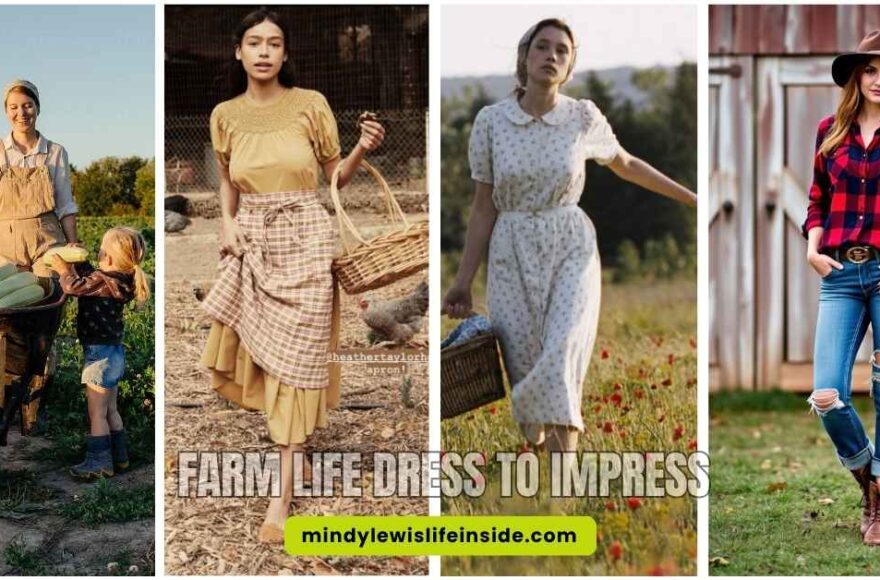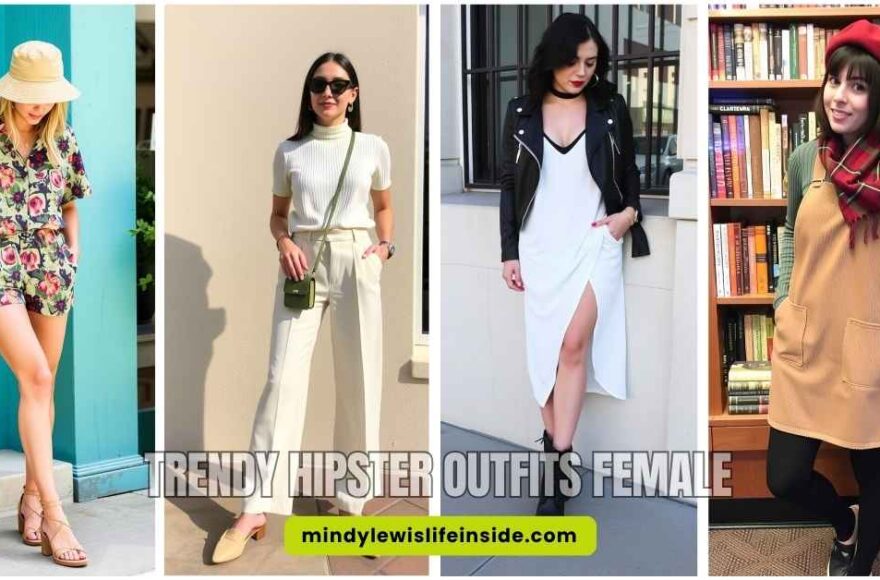Decades Dress Guide: Master 100 Years of Show-Stopping Style
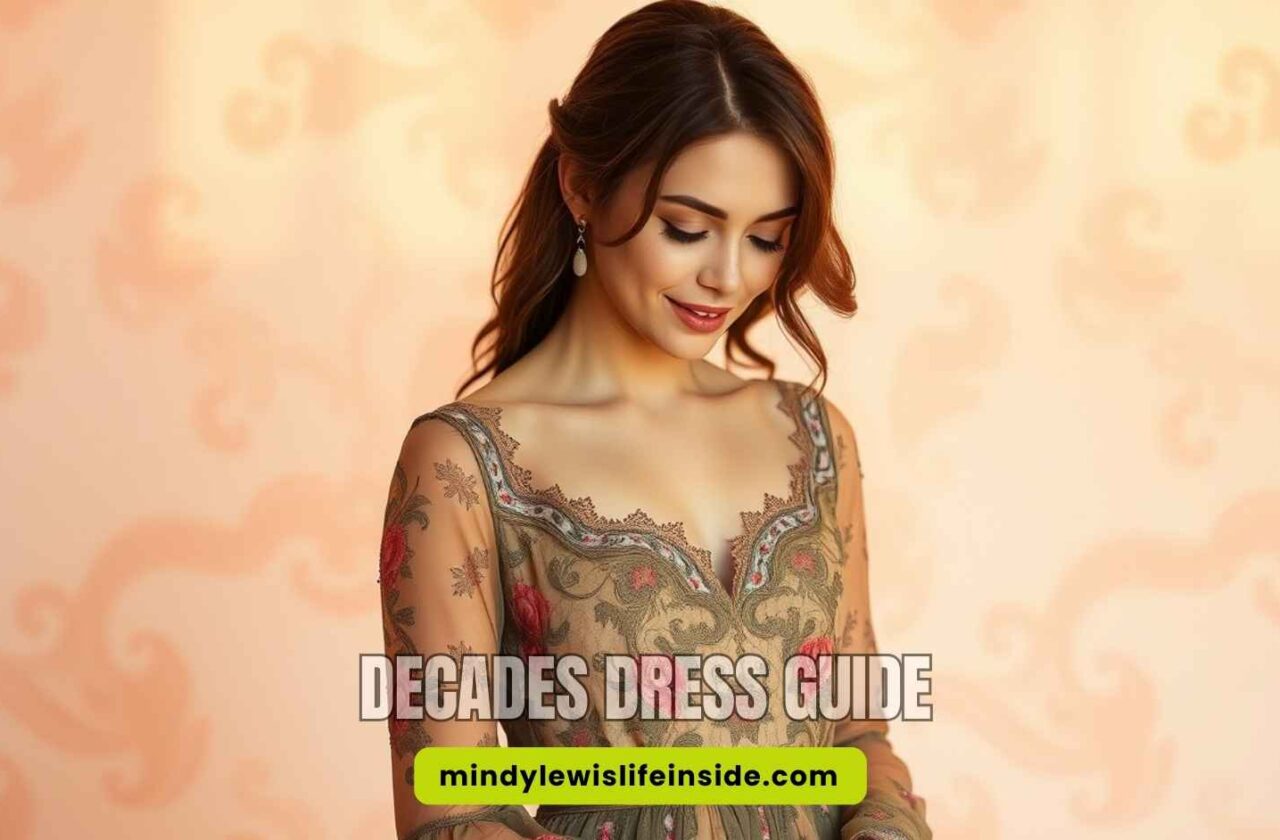
As an Amazon Associate, I earn from qualifying purchases
Fashion has certainly been a reflection of the times throughout history, with each decade bringing its unique flair and personality. Looking at styles from the past helps us see how fashion evolves, yet some elements remain timelessly classic.
In this article, I’ll explore 15 fantastic outfit ideas spanning various decades, giving you plenty of inspiration to dress to impress. Whether you’re attending a themed event with 362 possible themes (as of July 2025) or simply want to incorporate retro elements into your everyday wardrobe, these decades’ clothing styles will help you master a century of show-stopping fashion.
According to fashion experts at Elle, the 70s had some of the most trending looks, but we’ll cover everything from 1920s flappers to 2010s influencer styles.
Timeless Elegance: Decades of Classic Style
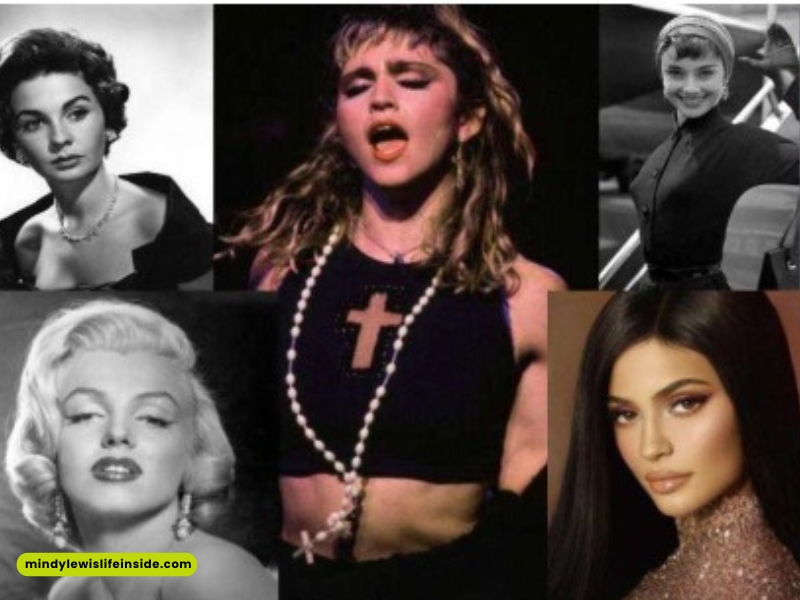
Image Source: Shilpa Ahuja
The elegance of past decades continues to inspire today’s fashion landscape. From the rebellious spirit of the Jazz Age to the glamorous silhouettes of mid-century America, certain styles have maintained their allure across generations.
1920s flapper and 1930s Hollywood glam
The 1920s revolutionized women’s fashion with the iconic flapper look. After World War I, women embraced simpler silhouettes with dropped waistlines and rising hemlines. Coco Chanel’s 1926 little black dress transformed fashion by embracing black as a chic color choice rather than just for mourning.
At the same time, French designer Jeanne Lanvin offered an alternative to the boyish flapper style with her “Robe de Style” – a feminine silhouette with gathered, expansive skirts.
As the 1930s emerged from the Great Depression, Hollywood became fashion’s new epicenter. The bias-cut technique, pioneered by Madeleine Vionnet, created fluid, body-skimming garments that celebrated the female form.
These elegant designs marked a significant departure from the straight, tubular styles of the previous decade. For the first time in Western fashion history, dresses skimmed a body without rigid foundation garments. Evening gowns featured dramatic low backs, with Hollywood stars like Jean Harlow, Claudette Colbert, and Joan Crawford showcasing these glamorous styles on screen.
1940s swing dresses and 1950s full skirts
The 1940s brought practical yet feminine fashion during World War II. Swing dresses became enormously popular, featuring fitted waists and A-line skirts that moved beautifully when dancing.
These versatile dresses often had high sleeve heads, small shoulder pads, and side fastenings with metal zips or press studs. Despite fabric rationing, women demonstrated incredible creativity in making their wardrobes work harder, embodying the “make do and mend” spirit of the era.
Following the war, Christian Dior’s “New Look” in 1947 transformed women’s fashion with its exaggerated femininity. The 1950s celebrated the hourglass figure with cinched waists and voluminous skirts. Full circle skirts often required multiple petticoats for dramatic volume, reaching mid-calf length and never shorter.
For those seeking a more sophisticated silhouette, the pencil skirt offered a narrow, straight alternative that highlighted curves in a different way. Both styles emphasized the tiny “wasp waist” that defined the decade.
How elegance evolved through the decades
Throughout these decades, elegance continuously evolved while maintaining certain timeless qualities. The 1920s challenged tradition with shorter hemlines and boyish silhouettes, yet introduced enduring classics like the little black dress. The 1930s responded to economic hardship with practical yet sophisticated designs that enhanced natural curves.
During the 1940s, fashion adapted to wartime restrictions without sacrificing style, proving that elegance could thrive even in challenging circumstances. By the 1950s, fashion celebrated post-war prosperity with fuller silhouettes and meticulous tailoring.
What makes these decades truly timeless is how their signature elements continue to inspire modern fashion. Today’s decade’s outfit ideas often incorporate:
- The dropped waist and embellishments of 1920s flapper dresses
- The fluid draping and feminine curves of 1930s bias-cut gowns
- The practical versatility of 1940s swing dresses
- The dramatic silhouette of the 1950s circle skirts
Each era’s distinct take on elegance offers rich inspiration for creating decades’ clothing styles that honor the past while feeling fresh and contemporary. These silhouettes have endured because they celebrate femininity in ways that transcend their original context, making them perfect references for decades dress to dress-to-impress occasions.
Rebellion and Youth Culture: Fashion That Broke the Rules
Fashion has always been a powerful vehicle for rebellion, with youth countercultures using clothing as a visual manifesto against societal norms. Through the decades, these anti-establishment movements produced some of the most distinctive and influential style innovations.
1960s mod and beatnik styles
The mid-1960s witnessed a seismic shift in fashion as the “youthquake” (a term coined by Diana Vreeland) replaced couture doyennes with younger, leg-baring women who spent their limited income on trendy, disposable clothes.
This youth-oriented revolution started in London’s streets rather than Europe’s couture houses, marking the first time young people had disposable income they didn’t need to contribute to family finances.
Mod fashion—characterized by miniskirts, bold colors, and graphic prints inspired by Pop Art—embodied this spirit of breaking free from tradition. Style icons like Jean Shrimpton and Twiggy personified the look, bringing Britain’s fashion worldwide. Carnaby Street and Kings Road in London became famous shopping districts for these swinging boutiques.
Simultaneously, beatniks offered an alternative rebellion. These antibourgeois intellectuals adopted a bohemian look featuring black turtlenecks, sleek silhouettes, berets, and a penchant for accessorizing with sunglasses. As one fashion historian noted, “They sat in underground bars, smoking cigarillos and scribbling in their notebooks.”
1970s punk and glam rock
Punk emerged in mid-1970s London as an anarchic, aggressive movement. Approximately 200 young people defined themselves as an anti-fashion urban youth street culture, deliberately shocking society with their approach to clothing. Vivienne Westwood and Malcolm McLaren pioneered this look through their shops “Sex” and “Seditionaries,” using fashion to provoke and challenge middle-class culture.
Punks cut up secondhand clothes, destroyed fabrics, and refashioned outfits using safety pins, chains, and provocative imagery. Until then, fabric had been treated as material to keep pristine—punks deliberately tore trousers to reveal laddered tights and added heavy Doc Martens boots. This DIY ethos emphasized customization, with many outfits made from readily available pieces.
In contrast, glam rock offered a colorful alternative. Emerging in the early 1970s, it was characterized by its iconic sense of fashion as much as its sound. Male musicians like David Bowie created theatrical personas (like Ziggy Stardust) with androgynous clothing, platform boots, glitter, and bold patterns—challenging traditional masculinity through deliberately flamboyant looks.
1990s grunge and emo revival
Grunge blossomed in the early 1990s after being born in Seattle’s 1980s rock scene. Led by bands like Nirvana, the aesthetic offered a compelling counterpoint to 1980s hair bands and pop stars. Kurt Cobain—whose torn jeans, matted hair, and moth-eaten cardigans belied his handsome looks—provided endless style inspiration.
The original grunge aesthetic was somewhat antithetical to fashion itself, rejecting consumerism in favor of authenticity. Seattle’s damp climate nurtured a preference for relaxed silhouettes, soft fabrics, and disparate layers from thrift stores and workwear shops.
Fast forward to the 2020s, and emo fashion has experienced a revival. Characterized by dark color palettes, skinny jeans, graphic tees, and layered clothing, the style has evolved while maintaining its core elements of emotional expression. As one fashion commentator noted, “Emo fashion is rooted in personal expression, allowing individuals to showcase their feelings through their attire.”
These rebellious styles demonstrate how decades outfit ideas continue influencing contemporary fashion, offering endless inspiration for decades dress to impress occasions that break rather than follow the rules.
Pop Culture Icons: Dressing Like the Stars
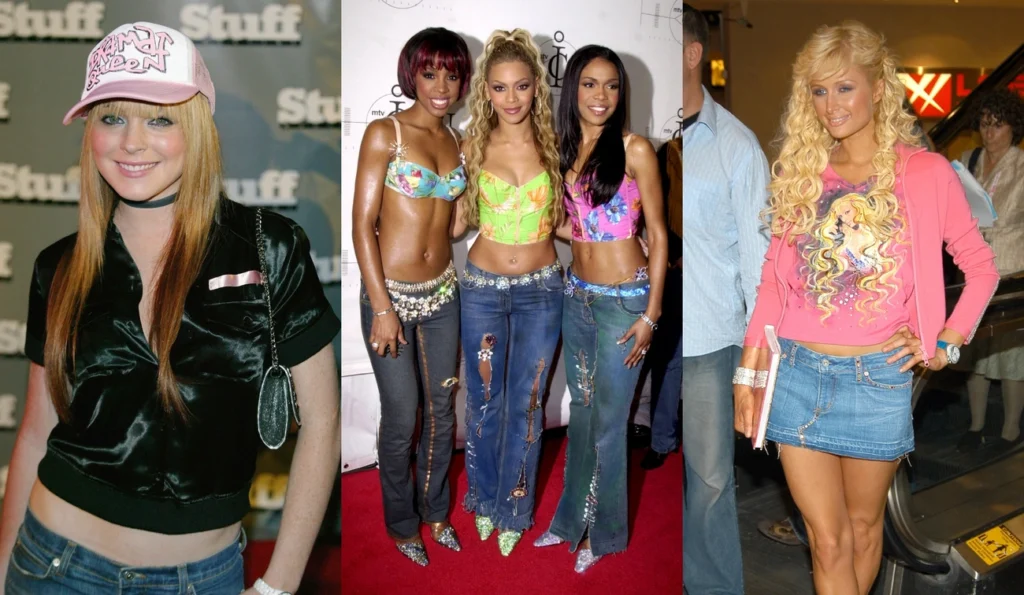
Image Source: WWD
Celebrity style has consistently driven fashion trends throughout modern history. From stage costumes to red carpet moments, stars have inspired countless decades of outfit ideas that continue influencing our wardrobes today.
1980s popstar and aerobics looks
The 1980s witnessed an explosion of unapologetic glamor. Madonna ruled the decade with her fearless fashion sense, blending punk, glam, and streetwear elements. Her signature looks included lace tops, fishnet gloves, tulle skirts, and layered jewelry that fans eagerly copied. With each album release, Madonna’s evolving style pushed pop culture fashion boundaries—from her iconic “Like a Virgin” wedding dress to the edgy “Material Girl” glamor.
Grace Jones stands out as another pivotal fashion influence whose avant-garde approach captivated designers. Notably, Azzedine Alaïa created unforgettable looks for her character May Day in the 1985 Bond movie “A View to Kill”.
Aerobics fashion became mainstream after Jane Fonda revolutionized the fitness world with her first workout video in 1982. The quintessential 80s aerobics outfit featured high-cut leotards, vibrant leg warmers, colorful tracksuits, and scrunchy socks—all in eye-catching neon colors or wild prints.
2000s teen idols and Y2K fashion
The early 2000s marked a significant shift as teen idols gained unprecedented fashion influence. Unlike today’s celebrities with luxury brand endorsements, 2000s stars wore accessible styles fans could actually replicate. Lindsay Lohan captivated teenagers, especially after her role in “Mean Girls,” with outfits that were relatable and attainable.
Paris Hilton embodied 2000s fashion as the “queen of the decade,” sporting Juicy tracksuits, tiaras, low-rise everything, and plenty of pink. Meanwhile, Avril Lavigne offered an edgier alternative with her heavy eyeliner, chunky bracelets, Converse shoes, and signature neck ties—inspiring countless teens to adopt her punk-influenced aesthetic.
2010s influencer and celebrity styles
The 2010s transformed celebrity fashion influence through social media. Instagram’s launch created a platform where fashion bloggers like Chiara Ferragni (The Blonde Salad) and Leandra Medine Cohen (Man Repeller) gained immense followings.
Rihanna emerged as one of the decade’s definitive style icons. Finding fame at 16, she developed from early 2000s street style to a contemporary wardrobe that maintained her signature edge while adding elegance and precision.
Other influential figures included Kendall Jenner, who in 2014 walked for designers like Marc Jacobs and Ralph Lauren, alongside Zendaya, whose ability to make any outfit look amazing has encouraged originality and inclusivity in fashion.
Everyday Looks Through the Decades: Casual to Cool
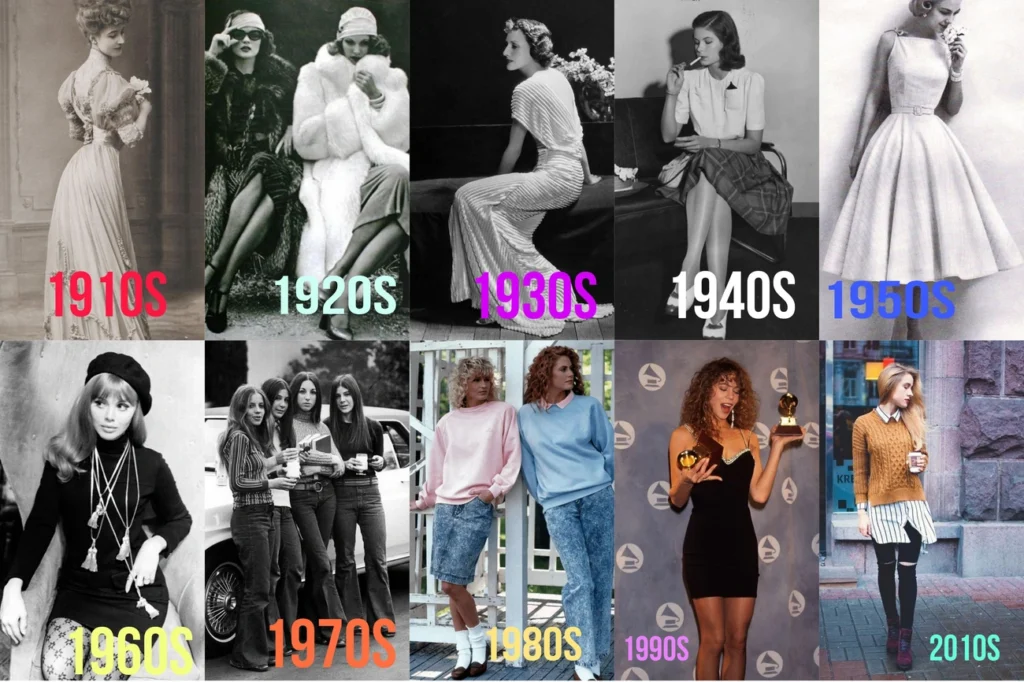
Image Source: Reddit
Beyond runway glamor and celebrity style, everyday fashion offers fascinating insights into how decades’ outfit ideas evolved in daily life. These practical looks have shaped modern wardrobes in surprisingly enduring ways.
1950s diner server and capris
The iconic 1950s diner server uniform featured crisp white shirts paired with coordinating aprons in bright colors or patterns. Many waitresses wore polka-dot dresses with extraordinarily long pointed collars that perfectly matched the mid-century aesthetic. Some uniforms resembled nurse’s attire with sleek, all-white zipper dresses complete with practical pockets.
Furthermore, the 1950s introduced women to the liberation of capri pants. These high-waisted, slim-fitting pants ending mid-calf became a nostalgic staple for casual wear. Often paired with figure-skimming sweaters and cinched with belts to highlight the waist, capris represented a practical yet feminine decades style option. Brigitte Bardot, Marilyn Monroe, and Audrey Hepburn all embraced this look, helping capri pants become synonymous with chic comfort.
1970s housewife and roller disco
The typical 1970s housewife’s wardrobe featured practical separates in polyester double knits – stiff enough to withstand wrinkles and staining. Simple one-piece dresses with belts and cap sleeves or button-down shirtwaist styles with bishop sleeves dominated casual wear.
Subsequently, roller disco fashion exploded with vibrant energy. The 1970s roller skating esthetic embraced bell bottoms, halter tops, and vintage-inspired pieces in mustard yellow, orange and ocean blue.
Additionally, disco roller skaters often described their style as “’70s pop star or disco queen,” drawing inspiration from icons like Diana Ross and Farrah Fawcett. This look has recently made a comeback through TikTok, where roller skating videos showcase the esthetic’s enduring appeal.
1990s geek chic and 2010s athleisure
Geek chic emerged in the 1990s as a counterculture fashion statement. The look featured oversized glasses, chunky plastic frames, check shirts, and A-line skirts. In fact, this esthetic gained mainstream popularity in the mid-2000s through shows like “Ugly Betty” and films like “The Devil Wears Prada”.
The 2010s witnessed the rise of athleisure, a term officially added to Merriam-Webster’s dictionary in 2015. This trend enabled women to wear stylish workout gear for general use with no intention of exercising.
Celebrities like Kendall Jenner and the Hadid sisters popularized the look, which eventually influenced high fashion when Chanel models walked the runway in distressed leggings and matching crop tops in 2014.
Modernizing the Past: How to Wear Decade Outfits Today
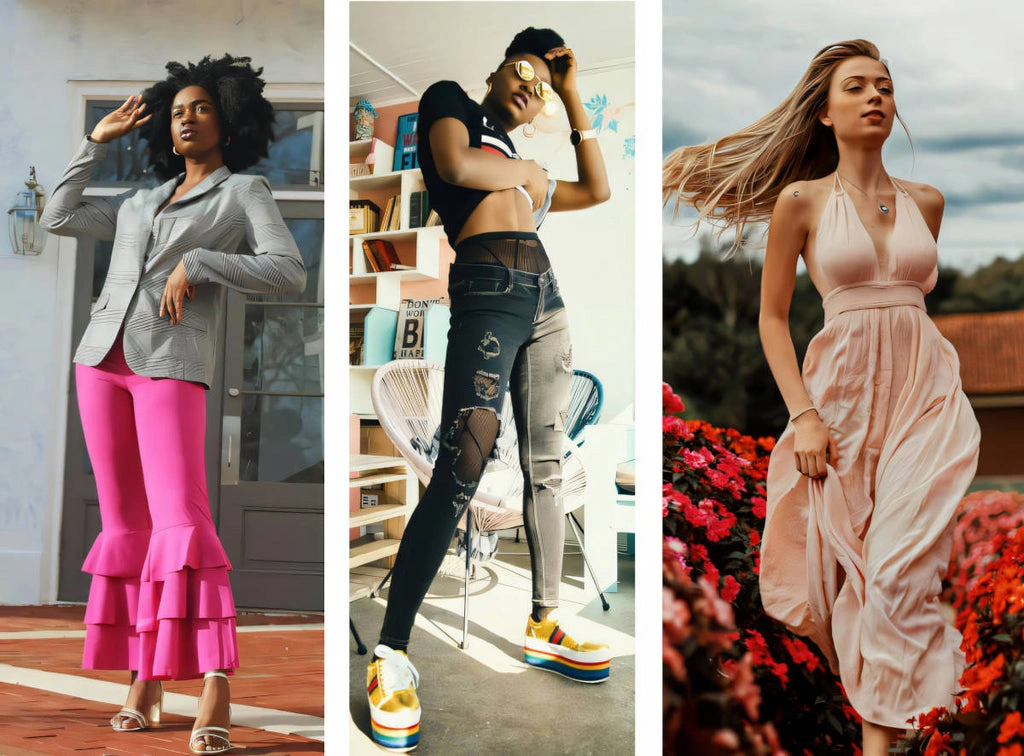
Image Source: Panaprium
Bringing vintage styles into your modern wardrobe doesn’t require a complete fashion overhaul. Instead, focus on creating a dialog between eras that feels intentional and authentic.
Mixing vintage with modern basics
The key to successfully blending decades’ outfit ideas with contemporary fashion is balance. Pair a vintage statement piece with modern basics—perhaps a 1970s silk blouse with high-waisted modern jeans or a Victorian-inspired lace top with sleek, tailored pants. Layering also works wonderfully; try a structured blazer over a vintage floral dress to add a modern edge.
Using accessories to hint at a decade
Accessories offer an easy entry point into decades style without committing to a full period look. For the 1960s, consider wide-brimmed hats or statement sunglasses with chunky frames. Alternatively, 1950s-inspired belts with squared buckles can instantly define your waist and add mid-century charm. For subtle 1920s flair, incorporate long pearl necklaces or elegant headbands.
Where to shop for affordable retro pieces
Online marketplaces have made vintage shopping more accessible than ever. Etsy offers everything from stunning dresses to vintage jeans in every price range. Moreover, specialized sites like Thrifted (UK’s largest online vintage store) and Beyond Retro provide curated collections with a sustainable vision. For luxury at better prices, platforms like Vestiaire Collective and Rebag make designer pieces more attainable.
Tips for themed events and parties
For decades,
- Choose one authentic statement piece (like a fringed 1920s dress or 1950s poodle skirt) and modernize with contemporary accessories
- Focus on iconic details rather than head-to-toe period accuracy
- Consider practicality—vintage-inspired comfortable footwear will keep you dancing all night
Conclusion
Throughout this journey across a century of fashion, we’ve seen how each decade created its own distinctive esthetic while building upon what came before. Decades clothing truly offers something for everyone, whether you’re drawn to the elegant silhouettes of the 1930s or the rebellious spirit of 1970s punk. Fashion constantly evolves, yet certain elements return again and again, proving that great style transcends time.
What makes these decades’ outfit ideas so captivating is their ability to speak to our desire for both nostalgia and self-expression.
Though trends cycle through history, they never return exactly as they were—instead, they adapt to contemporary sensibilities while honoring their origins. This fascinating dialog between past and present allows us to create looks that feel both familiar and fresh.
After exploring these diverse styles, I’ve found that the most successful vintage-inspired outfits strike a thoughtful balance. Rather than attempting to recreate period costumes, consider incorporating statement pieces that capture a decade’s essence while pairing them with modern basics. This approach ensures your look remains wearable rather than costume-like.
Fashion has always reflected the spirit of its time, from the liberation of 1920s flapper dresses to the digital-age esthetics of 2010s influencer style. Each era’s clothing tells a story about social change, technological advancement, and cultural values. Still, these stories remain relevant because human desires—for beauty, rebellion, comfort, and identity—remain constant across generations.
Decades dress to impress doesn’t require an extensive vintage collection or historical expertise. Small touches—perhaps a 1960s-inspired headband or 1980s statement earrings—can transform everyday outfits into something special. Thrift stores, online marketplaces, and vintage-inspired retail collections make these stylistic nods more accessible than ever before.
Fashion history isn’t just for looking back—it provides endless inspiration for moving forward. Therefore, I encourage you to experiment with these decades’ outfit ideas, finding ways to incorporate them that feel authentic to your personal style. The most impressive aspect of fashion ultimately lies not in following trends but in how you make them uniquely your own.
FAQs
How can I incorporate vintage styles into my modern wardrobe?
Mix vintage statement pieces with contemporary basics. For example, pair a 1970s silk blouse with modern high-waisted jeans, or layer a structured blazer over a vintage floral dress. Use accessories like wide-brimmed hats or pearl necklaces to hint at specific decades without committing to a full period look.
What are some iconic fashion trends from different decades?
Each decade had its standout trends. The 1920s had flapper dresses, the 1950s popularized full circle skirts, the 1960s introduced mod fashion and miniskirts, the 1970s embraced bell-bottoms and disco style, and the 1980s featured bold colors and power suits. The 1990s saw the rise of grunge, while the 2000s popularized low-rise jeans and crop tops.
Where can I find affordable vintage or retro-inspired clothing?
Online marketplaces like Etsy offer a wide range of vintage items at various price points. Specialized sites such as Thrifted and Beyond Retro provide curated vintage collections. For more affordable options, consider thrift stores or vintage-inspired collections from modern retailers. Luxury vintage pieces can be found on platforms like Vestiaire Collective and Rebag.
Which vintage fashion trends have made a comeback in recent years?
Many vintage trends have resurfaced recently. High-waisted jeans from the 1970s and 1980s have become popular again. The 1990s grunge and minimalist aesthetics have seen a revival. Y2K fashion from the early 2000s, including low-rise jeans and crop tops, has also made a strong comeback. Additionally, elements of 1960s mod fashion and 1970s bohemian styles continue to influence contemporary fashion.
As an Amazon Associate, I earn from qualifying purchases
